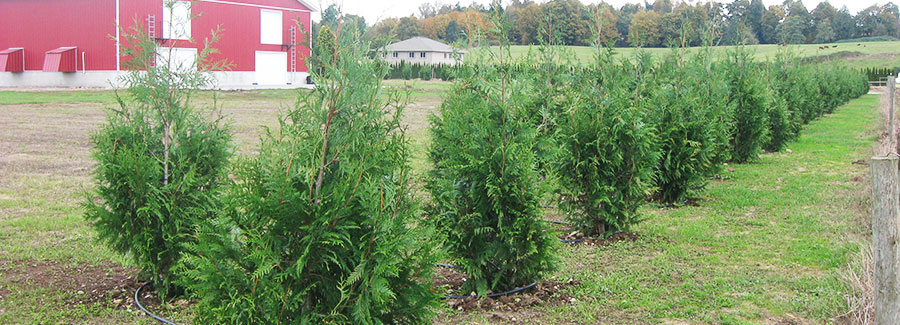Vegetative buffers
Vegetative buffers are a beneficial management practice that can be designed and applied to intensive agricultural operations.
Vegetative buffers are rows of trees and shrubs planted next to buildings, roads, fences or other features which can provide many benefits over a long time period. They are sometimes called shelterbelts, windbreaks or tree buffers.
Tree buffers are commonly planted on farms to provide a natural barrier to block wind, snow, noise, sight and trespassers. Buffers have many other uses and benefits too, including:
- Erosion control
- Providing shade and cover for farm animals
- Reducing farm emissions such as odour, dust and pesticide drift
Many of these benefits can contribute to good neighbour relations in the farm community.

Benefits
Benefits for livestock farms
Vegetative buffers can be very beneficial for livestock producers, including poultry, dairy and hog farmers. A common concern for producers is how their operations can affect their neighbours especially if there is dust or odour that can be carried onto neighbour’s property. Vegetative buffers can be a low cost strategy to reduce dust and odours that may affect neighbours.
Vegetative buffers can also lower heating and cooling costs for barns if they are designed correctly. Finally, vegetative buffers provide a natural landscaping alternative that can keep livestock barns out of sight, and out of mind.
Benefits for berry growers
Vegetative buffers can provide benefits to any type of food crop operation. Buffers can help protect a crop from unwanted airborne particles (e.g. dust, pesticides) whether they are coming from a source on the property or outside sources such as neighbouring farms or roads.
As is the case for livestock operations, vegetative buffers offer protection from the elements and provide a visual screen, both of which may be desired by a berry producer or other food crop operation.
Planning and installing
Information is available to help farmers plan and install vegetative buffers. Learn more about planning and installing vegetative buffers.
Case studies
Demonstration sites test the vegetative buffer design process and help build the information provided in the guidebook. Read more on the ten farms selected to demonstrate the benefits of vegetative buffers in the Lower Mainland and the Southern Interior.
